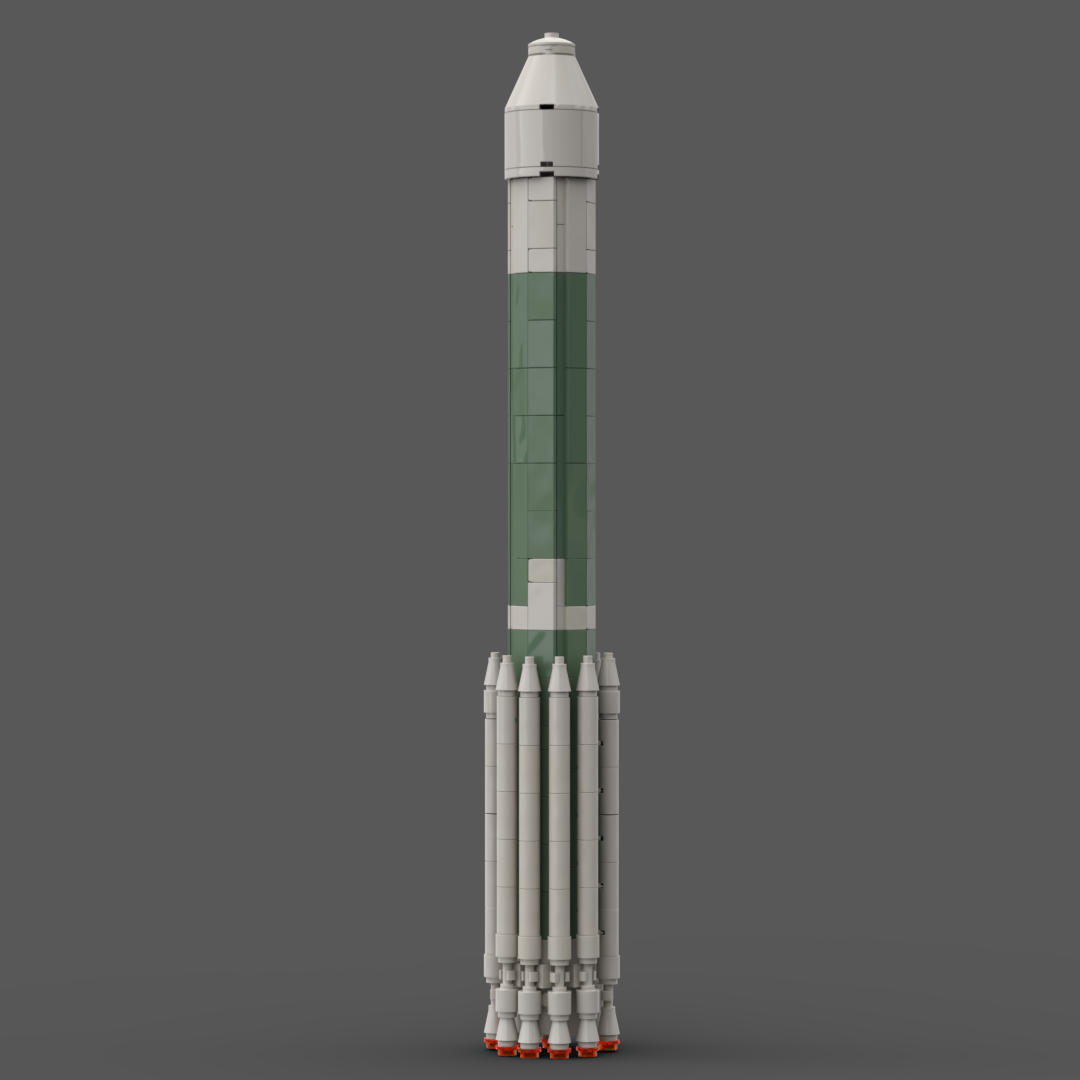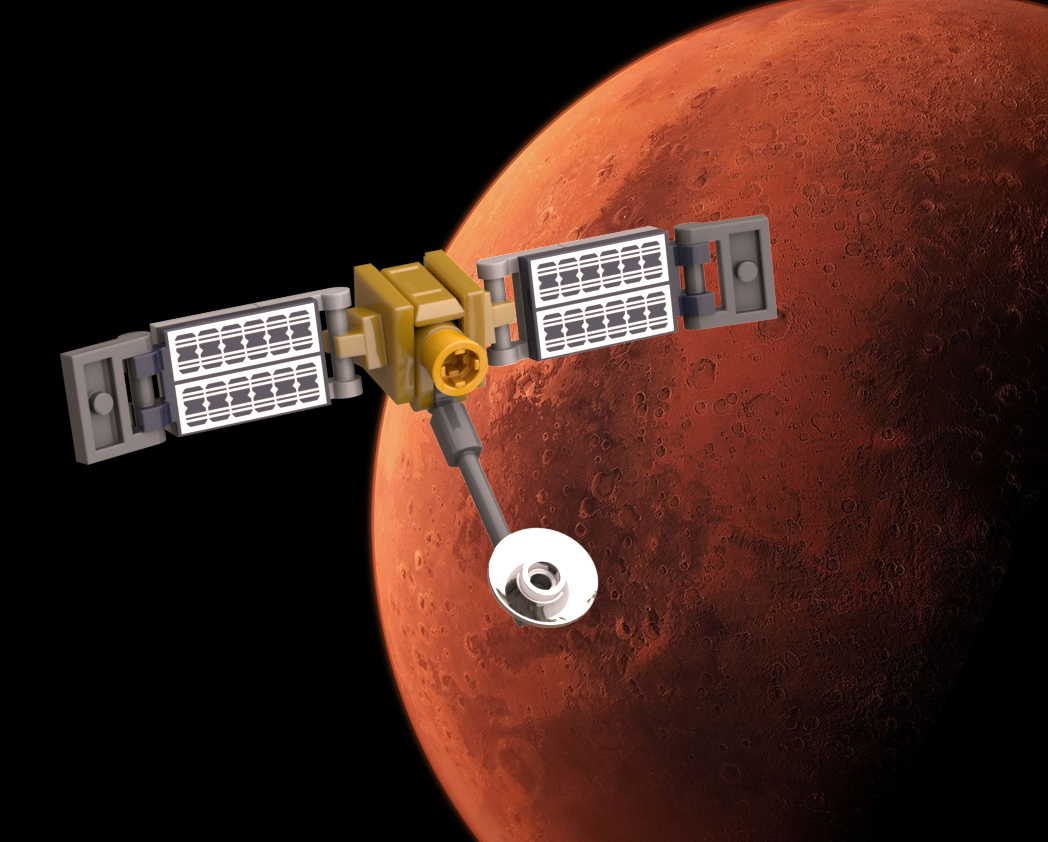
LEGO Designer:
Smazmats
Designed:
October 2020
Categories:
Launch Vehicles, All, Medium Lift Launch Vehicle, Space Agency - NASA
Launch Vehicle Details
Stages:
Length:
Diameter:
Mass at Launch:
Low Earth Orbit Capacity:
Total Thrust:
Apogee:
Class:
In the early 1980s, all United States expendable launch vehicles were planned to be phased out in favor of the Space Shuttle, which would be responsible for all government and commercial launches. Production of Delta, Atlas-Centaur, and Titan 34D had ended. The Challenger disaster of 1986 and the subsequent halt of Shuttle operations changed this policy, and President Ronald Reagan announced in December 1986 that the Space Shuttle would no longer launch commercial payloads, and NASA would seek to purchase launches on expendable vehicles for missions that did not require crew or Shuttle support.
McDonnell Douglas signed a contract with the U.S. Air Force in 1987 to provide seven Delta II’s. The Air Force exercised additional contract options in 1988, expanding this order to 20 vehicles, and NASA purchased its first Delta II in 1990 for the launch of three Earth-observing satellites. The first Delta II launch occurred on 14 February 1989, with a Delta 6925.
The first Delta II 7925 flew in November 1990. All further Delta II launches except three were from the 7000-series, and the 6000-series was retired in 1992.
The first stage of the Delta II 7925 was propelled by a Rocketdyne RS-27A main engine burning RP-1 and liquid oxygen. This stage was technically referred to as the “Extra-Extended Long Tank Thor”, a derivative of the Thor ballistic missile as were all Delta rockets until the Delta IV. The stage was 26 meters long and 2.4 meters wide, weighted over 100t when fueled, and burned for 260 seconds. In addition, two LR101-NA-11 vernier engines provided guidance for the first stage.
For additional thrust during launch, the Delta II 7925 used solid boosters. The 7000-series used Graphite-Epoxy Motors manufactured by ATK. The Delta II 7925 used nine boosters and would ignite six on the ground, then the remaining three in flight after the burnout and jettison of the first six.
The second stage of Delta II was the Delta-K, powered by a restartable Aerojet AJ10-118K engine burning hypergolic Aerozine-50 and N
2O4. These propellants are highly toxic and corrosive, and once loaded the launch had to occur within approximately 37 days or the stage would have to be refurbished or replaced. This stage also contained a combined inertial platform and guidance system that controlled all flight events. The Delta-K stage was 6 meters long and 2.4 meters wide, containing up to 6t of propellant, and burned for up to 430 seconds.
To reach higher energy orbits such as GTO or to reach Earth escape velocity for trans-Mars injection or other destinations beyond Earth the Delta II 7925 used a solid propellant third stage. This stage was spin-stabilised and depended on the second stage for proper orientation prior to stage separation, but was sometimes equipped with a rotation control system to maintain proper spin axis. It also included a yo-weight system to induce tumbling in the third stage after payload separation to prevent recontact, or a yo-yo de-spin mechanism to slow the rotation before payload release.
Notable Payloads
- Mars Global Surveyor
- Mars Pathfinder
- Mars Odyssey
- Mars Exploratory Rover (Spirit)
- Mars Scout (Phoenix)
Downloads
Both Delta II models are the same, just with a swap out of the Sand Green to Teal (Also known as Dark Turquoise or Br. Bluegreen) which better represents the “Delta Blue” used on the real rocket. This would have been a standard, however teal bricks are rather rare and super expensive with the colour being discontinued in the early 2000s and it was brought back in 2018. Due to this rarity, I would recommend ordering most of the teal from Lego’s own “Bricks and Pieces” service due to greater availability and lower cost.
Part count: 407 bricks, 48 lots.
| Unit | width | length | height |
|---|---|---|---|
| Studs | 8.6 | 8.6 | 43.1 |
| Inches | 2.7 | 2.7 | 13.6 |
| Centimetres | 6.9 | 6.9 | 34.5 |
No external URL provided.
Launch History information from space.skyrocket.de
Launch History information from space.skyrocket.de


